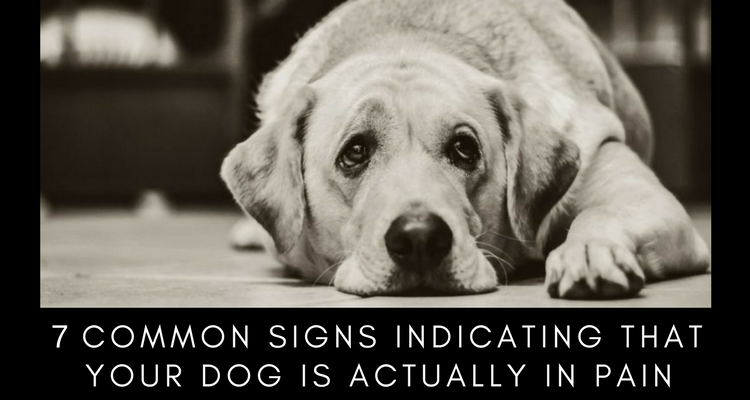
Call us Now ![]() +91-8744012053
+91-8744012053
Mon - Sat ~ 10:00 AM - 6:00 PM
Follow & Like
.png)


Call us Now ![]() +91-8744012053
+91-8744012053
Mon - Sat ~ 10:00 AM - 6:00 PM
Follow & Like
.png)



Canines can’t speak human language. They express using some actions and behaviors. So it is of utmost importance to closely watch our pets and decode their behavior for a deeper understanding of their well-being. When it comes to pain, dogs are great at tolerating it and hiding their suffering due to an inherent survival instinct.
Look out for these signs that indicate pain/injury in the dog, so you can immediately help it alleviate its state:
1) Licking itself abnormally: Grooming via licking is a normal thing for dogs to do. But if your dog is grooming a certain spot excessively then that is something for you to worry about, since this action indicates that the pet is in pain and trying to cure the source of it through grooming the spot.
2) Limping: In older dogs, painful arthritis can slow them down and cause them to limp. A paw injury too may result in uneven walking. Limping is a very obvious sign of pain. You may also notice your dog is hardly frisky, not wanting to climb up the steps, sleeping more, and not interested in toys/things it previously enjoyed. In case of arthritis, you can also try out some natural ways to cure it.
3) Excessive Panting: Panting (breathe with short, quick breaths) due to physical activities or hot temperatures is seen as a normal response in dogs. But if your pet starts panting for no reason at an odd time or when stationed in a cool air-conditioned room then it is certain that something isn’t right. The pain will also cause your dog to shiver while it pants heavily. Pain causes changes in the normal breathing pattern. Visit the vet at the earliest so that you can ascertain the cause of pain.
4) Loss of appetite: Pain and appetite loss are entwined. Inappetence is a signal to some hidden illness or discomfort. Dental troubles, stomach ache or some external injury may prevent your dog from eating normally. Stomach ailments include an upset stomach, constipation, and vomiting, directly affect your dog’s desire for food.
5) Aloofness: Is your furball avoiding being touched/petted? It may even bite you when you touch a certain spot. The transition from a chirpy to a grumpy pooch shouldn’t be taken lightly or even personally. Your four legged baby is suffering and needs your help. It is hurt and in pain and is simply trying to protect the localized spot from being touched by you and consequently more pain. You may also notice your hurting pet is suddenly avoiding company of other pets and humans. Apart from aloofness depression and lethargy are indicators of pain.
6) Starts to pee and poop indoors: Pain could force an otherwise toilet trained dog to poop or pee inside the house. It just makes it really difficult for the dog to get up in time and scoot outdoors. The pet also starts to defecate/urinate in its bed and avoids getting into the squatting pose for the purpose due to uneasiness.
7) Acting restless: An agonized pup will either sleep more or have difficulty in sleeping. Apart from this, you will notice it pacing, changing its position while laying, getting up and down, and facing difficulty to get in a restful/comfortable pose.
Noticing these symptoms early on will help you to offer the required care your furry one needs at this distressful time. It also stops a smaller issue from getting out of hand and turning into a serious concern. Administering human medicines is a BIG NO and can be fatal for the animal. Only professional guidance must be sought. Let the vet examine your pet and prescribe the right course of treatment. It is also very important to consider performing various grooming and healthcare activities for your healthy dog so as to gear itself up for any upcoming disease whatsoever.